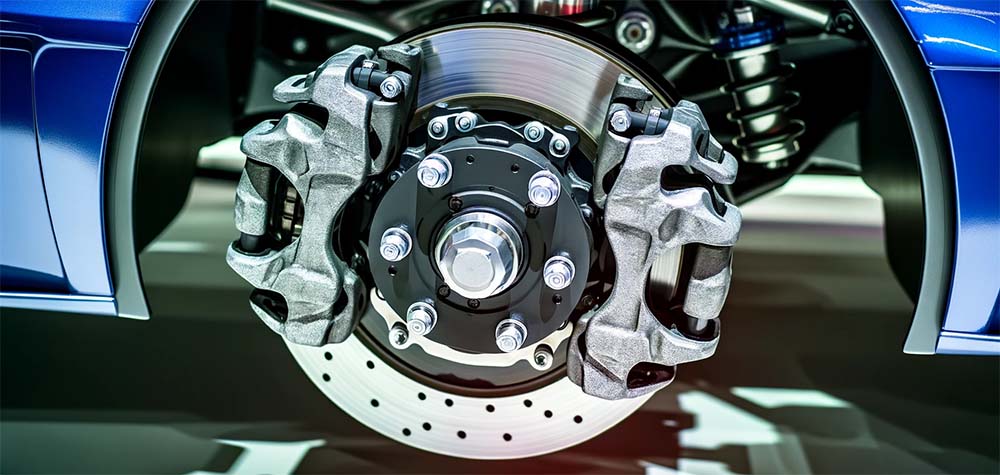In the competitive and exacting world of high-speed racing, the pursuit of technological advancements that can offer a competitive edge is relentless. Among the myriad of innovations designed to enhance vehicle performance and safety, the implementation of dual brake calipers stands out as a particularly significant development. This advanced braking system, which features two calipers operating on a single brake disc, is engineered to provide a superior level of braking performance. Traditional braking systems, which typically utilize a single caliper per disc, cannot match the efficiency and control offered by dual calipers. The dual caliper setup ensures a more potent and evenly distributed braking force, a critical advantage in the high-stakes environments of racing circuits. The ability to decelerate rapidly and with precision directly impacts a racer’s ability to navigate turns, manage speed, and avoid collisions, making dual brake calipers a cornerstone of modern racing safety and performance strategies.
The Mechanism of Dual Brake Calipers
Understanding the mechanism behind dual brake calipers illuminates why they are so effective in a high-speed racing context. At its core, the system is designed to optimize the distribution of braking force across the surface of the brake disc. By situating one caliper on each side of the disc, the system achieves a balanced application of pressure, which in turn promotes more efficient heat dissipation. This is crucial in racing, where high speeds generate significant heat in braking systems, leading to the risk of brake fade. Brake fade, a condition where brakes lose effectiveness due to overheating, can be catastrophic in racing scenarios. The dual caliper design mitigates this risk by ensuring that the heat generated during braking is more effectively managed. Additionally, having two calipers per disc allows for a redundancy in the braking system, providing a backup in the event of a caliper failure, thus enhancing the safety of the vehicle.
Advantages of Dual Brake Calipers in Racing
The switch to dual brake calipers brings a suite of benefits to the racing vehicle, chief among them being:
- Enhanced Braking Performance: With two calipers working in concert, the system can apply greater force, allowing for quicker stops.
- Superior Heat Management: Even distribution of braking forces means less heat buildup, reducing the risk of brake fade during prolonged use.
- Reduced Component Wear: Uniform application of pressure extends the life of brake discs and pads.
- Improved Control and Responsiveness: Drivers experience finer control over braking intensity, crucial for maneuvering at high speeds.
These advantages make dual brake calipers an indispensable component for any racing team serious about safety and performance.

Installation Considerations for Dual Brake Calipers
Integrating dual brake calipers into a vehicle necessitates a detailed assessment of the existing brake system to ensure compatibility and optimal performance. Key considerations include the size and capacity of the current brake discs, as they must withstand the increased force and heat generated by the additional calipers. Moreover, ensuring adequate space within the wheel assembly is crucial to accommodate the extra calipers without impeding other components. Selecting the right type of calipers and brake pads, specifically designed for the vehicle’s make and model and intended use, is also essential for achieving the desired performance enhancement. Professional installation is highly recommended to navigate these complexities effectively.
Maintenance Tips for Dual Brake Calipers
Maintaining dual brake calipers is essential for sustaining their performance and reliability. Key maintenance actions include:
- Regularly inspecting the calipers for signs of wear or damage.
- Checking brake pads and discs for wear and replacing them as necessary.
- Ensuring the hydraulic system is free from leaks and that fluid levels are adequate.
- Cleaning the calipers to prevent dirt buildup, which can impede their operation.
- Lubricating moving parts to prevent corrosion and ensure smooth operation.
Adhering to these maintenance tips can help extend the lifespan of dual brake calipers and maintain their performance advantage.
Conclusion
Dual brake calipers have become a defining feature of high-speed racing, offering an unmatched blend of safety and performance benefits. By providing more effective braking, better heat dissipation, reduced wear, and improved control, they enable racers to push the limits of their vehicles with confidence. The adoption of dual brake calipers is a testament to the racing industry’s continuous quest for technological advancements that enhance competitive edge and safety. As racing continues to evolve, the importance of dual brake calipers in achieving top performance is undeniable, making them a critical component in the design of any high-speed racing vehicle.

